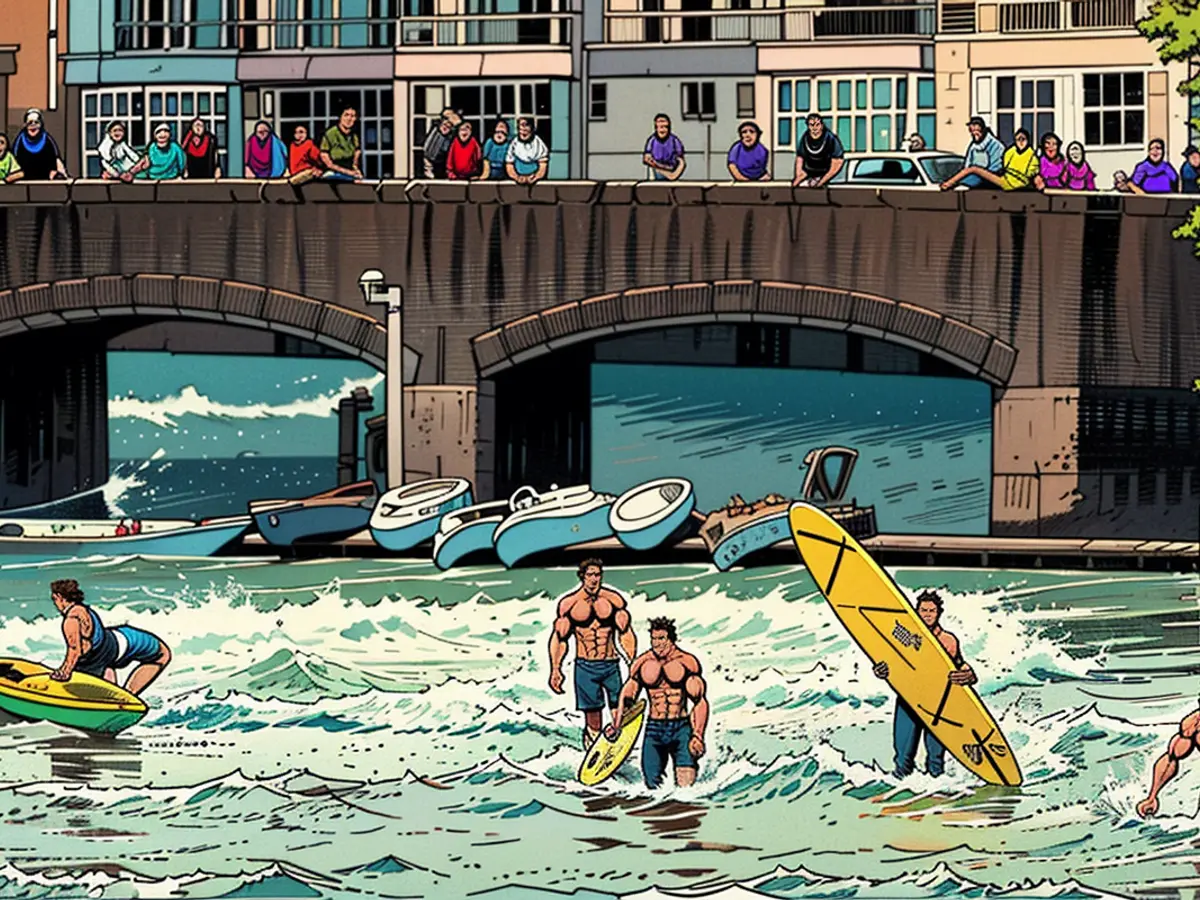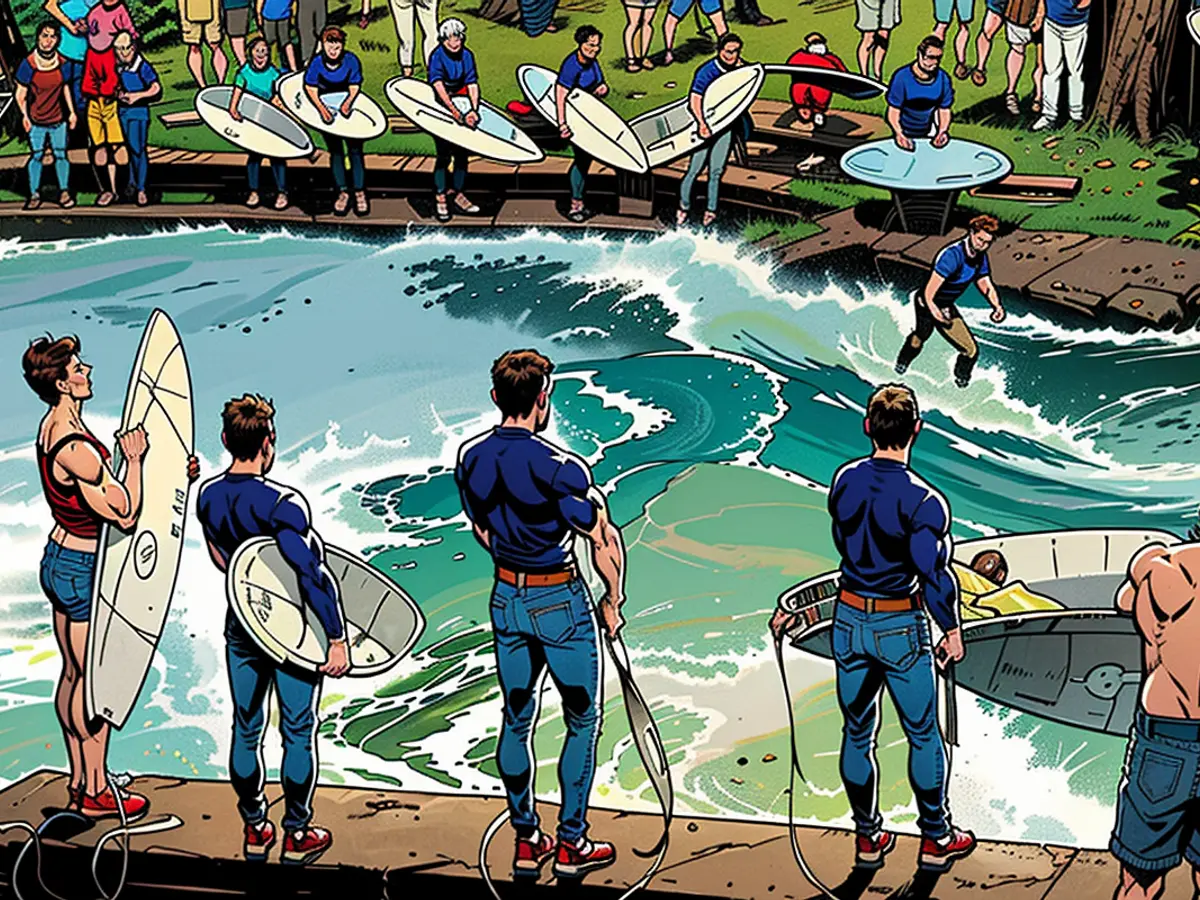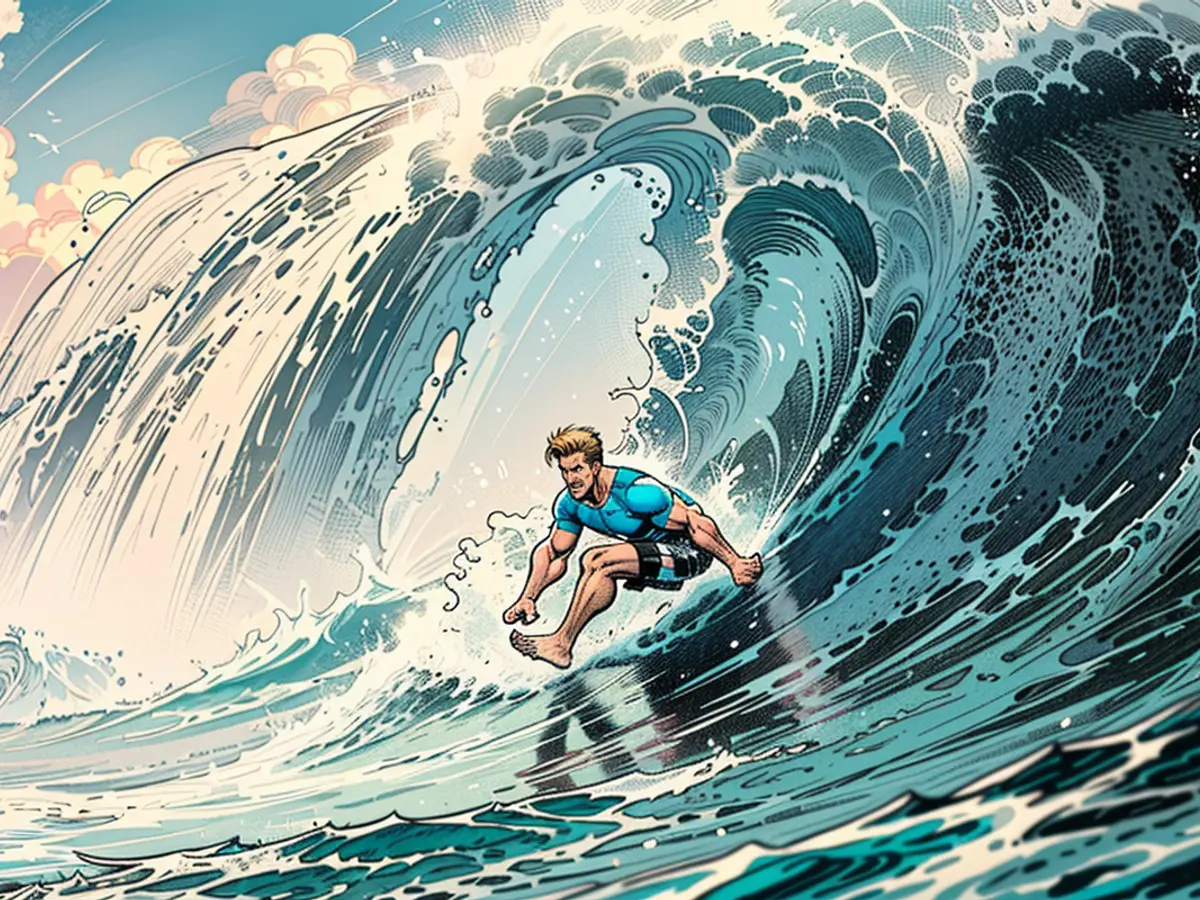Urban wave-riding is gaining momentum and practicality as a pastime.
Outdoors, indoors, by the river, at the airport: Home surfing is all the rage now, the sea isn't mandatory anymore. The wave in the Eisbach, smack dab in the middle of Munich, has swept across Germany and Europe in an eco-friendly manner.
Waves crashing, astonished onlookers on the shore - and the perfect wave: a surfer's nirvana. Without the ocean, right in the city. The Eisbach wave in Munich draws surfers and spectators from every corner of the globe - and even catches the attention of the surfer's haven, Australia. The first river surfers in Munich were trailblazers back in the '70s. From there, experts say, the sport spread like wildfire across Germany and Europe.
More than a decade ago, surfers in other German cities started dreaming of building their own waves on their local rivers, inspired by the Eisbach wave. "At the time, it was just a dream," says surfer and engineer Benjamin Di-Qual. Overcoming numerous technical and administrative hurdles became a daunting task. On river wave forums, surfers and engineers traded ideas and discussions began shaping the initial plans.
Artificial waves spring up across Europe
Now, engineers in Augsburg, Nuremberg, Hannover, and Pforzheim have sculpted sophisticated artificial waves. Elsewhere, construction is underway. There are waves in France, Austria, Italy, the Czech Republic, and Switzerland, as well as in Canada and the USA.
"Surfing is the fastest-growing water sport after stand-up paddling. The scene is massive," says Janne Paul Schmidt, chairman of the Gießen Lahnwellen Association and co-founder of the International River Surfing Network (IRSN). Climate-friendly and accessible, especially as it requires no long-distance travel. Plus, it's set to become a mass sport. The potential benefit to city life is boosting its quality of life.
Surf parks as a golden opportunity
Hawaii and Australia - that was once the norm. Now, surfer's paradise is everywhere. For instance, at the outlet of a waterworks like in Innsbruck, framed by mountain peaks at Lake Ebensee east of Salzburg.

Or near the airport: In Munich, a new artificial surf park has just opened, boasting operators that it's Europe's largest. A wave can roll in every ten seconds, just like in the sea. Although the 180-meter-long pool can't compare to wide beaches, the wave can be customized: It can stay flat for beginners or curl into a breaking tube for the pros.
These artificial waves could also provide opportunities for high-performance sports, training, and competitions, according to the German Surfing Association (DWV). The surf sport is on the rise, says DWV vice-president Tom Kronenbürger. The association has seen a 45% increase in members in just a few years. "That's probably also due to the sport now being an Olympic sport - but also to the opportunities to practice the sport within Germany."
Sophisticated technology with easy emergency shut-off
Standing waves on rivers are created by obstacles and height differences. "When the rushing water above meets the slower flowing water below or an obstacle, a surfable wave can form," explains Norbert Gebbeken, president of the Bavarian Chamber of Engineers-Building. Sometimes, plates in the water that can be moved hydraulically according to water level provide a wave. Adjusting the wave for different skill levels is a feature in some places. Emergency stop buttons allow for disabling the wave in certain situations, as the current could be potentially dangerous. Associations usually have to gather substantial funds to make such projects a reality.
"Brettlrutschn" the precursor to river surfing
River surfing is a traditional Bavarian sport. The sea was too far away, so passionate surfer Arthur Pauli strapped his self-made board onto the Alz river around 1965. He fastened a rope to a tree jutting out into the river. "Brettlrutschn" is the term the pioneers used to describe their new sport. Around 1972, Pauli stood on a surfboard at the Flosslände in Munich. In 1975, the first surfers dared to venture into the Eisbach - illegally.
With an estimated 3,000 to 5,000 active surfers, Munich likely has the most extensive river surfing scene in Europe. On beautiful days, dozens of athletes may wait up to 20 minutes for their turn on the board - for a mere 30-second ride. Then, the next one is ready to go.

The surge of interest in water sports has led to the creation of artificial waves in various cities across Europe. Surfers can now enjoy a wave-riding experience in Munich's city center, with the new artificial surf park offering waves every ten seconds, catering to beginners and experts alike.
Water sports enthusiasts, inspired by the success of the Eisbach wave, are now building artificial waves in other German cities and beyond. These developments have made surfing an accessible and popular water sport, with surfers now able to practice in cities like Munich, instead of traveling to traditional surfing destinations.






